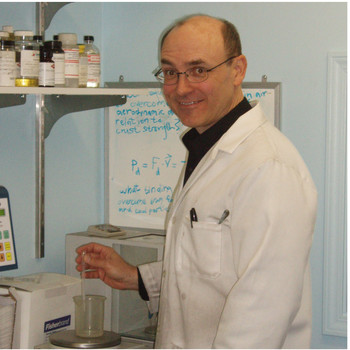A 23.0 g sample of I2(g) is sealed in a gas bottle having a volume of 500 mL. Some of the molecular I2(g) dissociates into iodine atoms and after a short time the following equilibrium is established. I2(g-->2I(g) For this system, Kc= 3.80 x 10^-5. What mass of I2(g) will be in the bottle when equilibrium is established?
1 Answer
O.K., this is actually a pretty common equilibrium calculation. What we are going to do is first write down the equilibrium expression, then rearrange it to solve for
Then it gets interesting because we also have a condition that that total amount of iodine must equal 23.0 grams. So we are going to have to substitute a variable for the amount of
By the way, 23.0 grams of
So:
Great. Now we have to figure out how much
The balanced chemical equation is:
Let's say that "X"
Initial amounts: 0.18123869 M of
Final Amounts: 0.18123869-X M of
(that is, each iodine molecule will produce two iodine atoms)
So, substituting the final amounts into equation (1):
Since
The equation then becomes
or
So the final concentration of
The mass of
0.500 L ×
So your final answer is, 22.8 grams of
Cheers!


